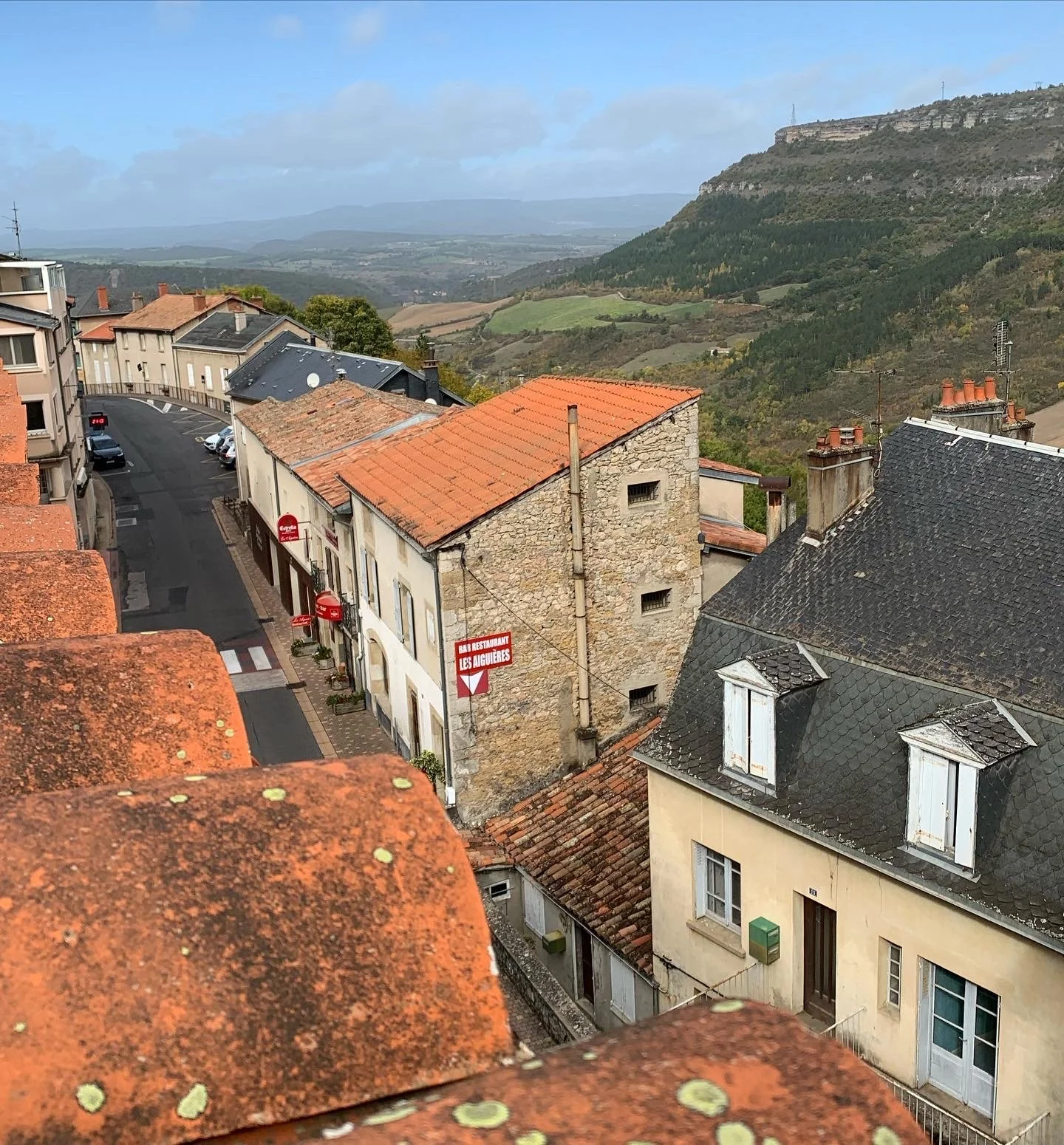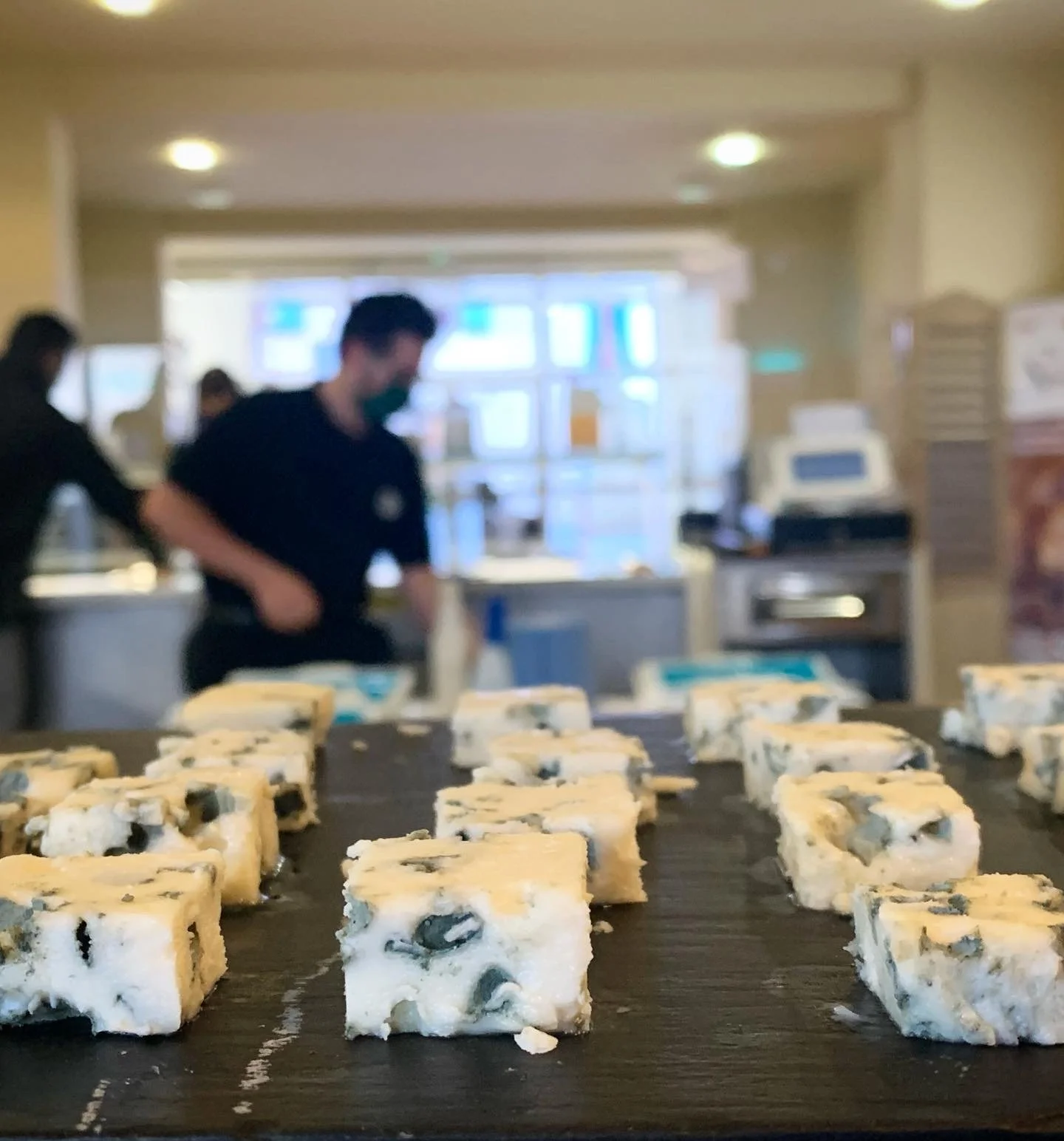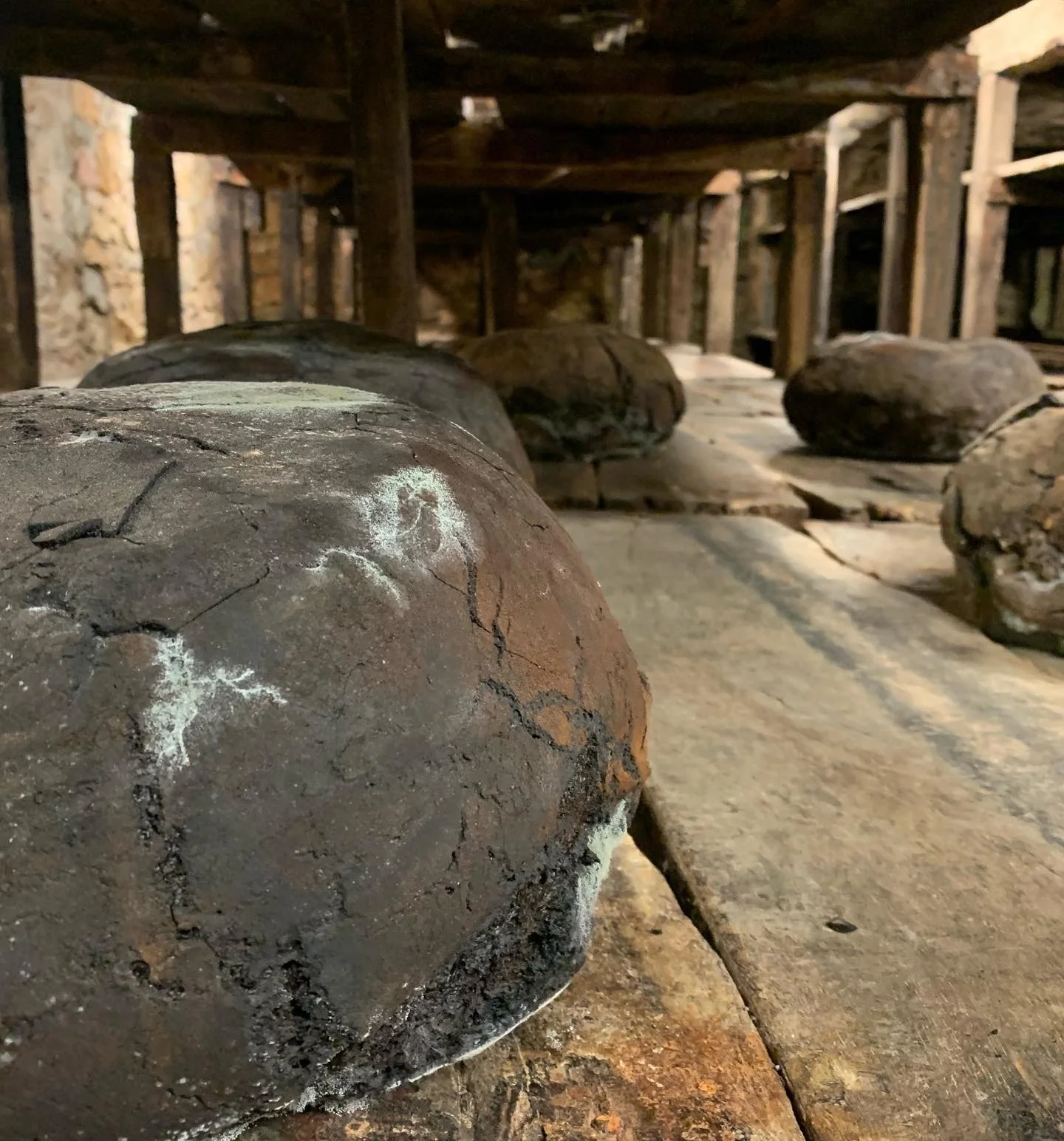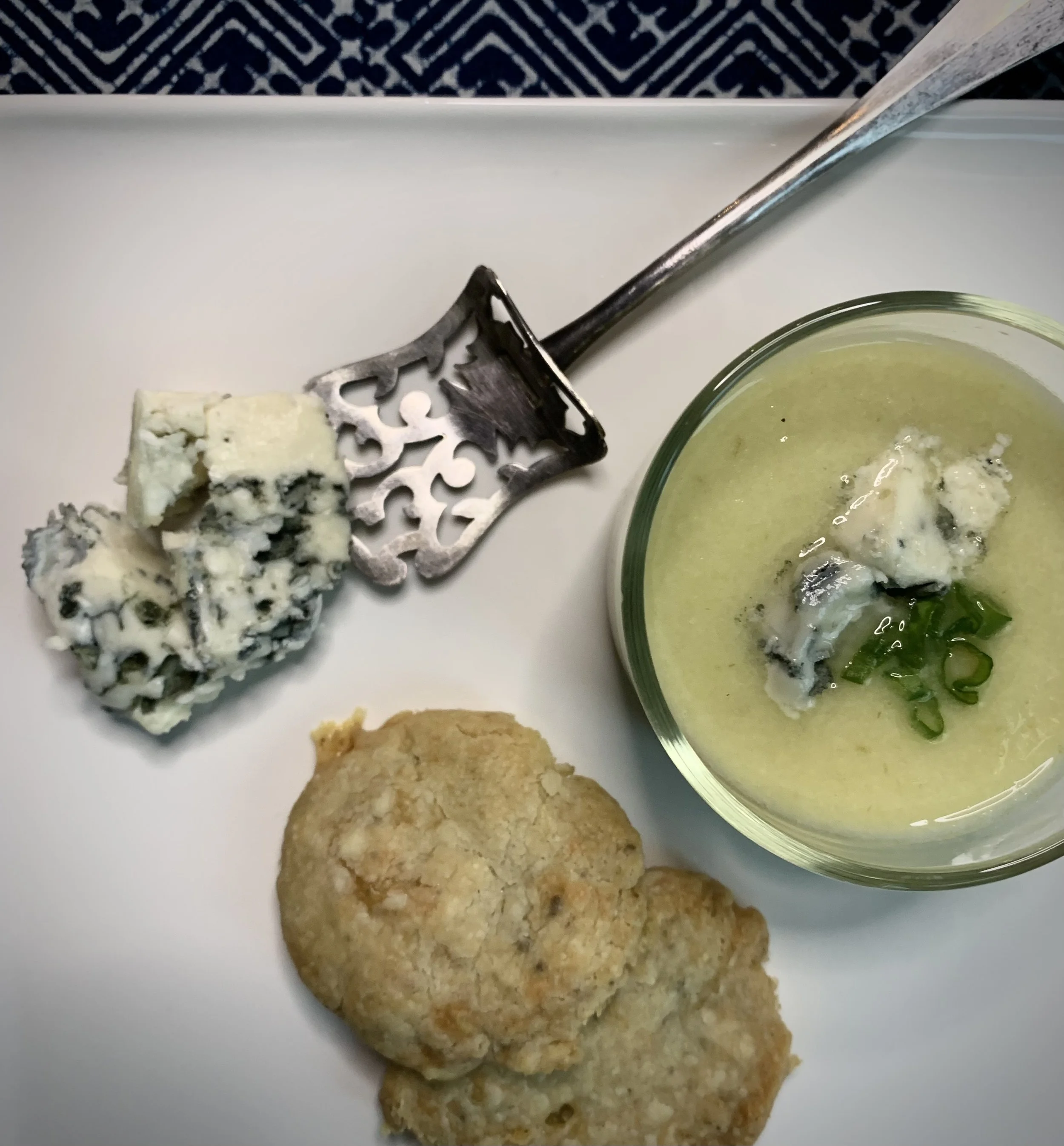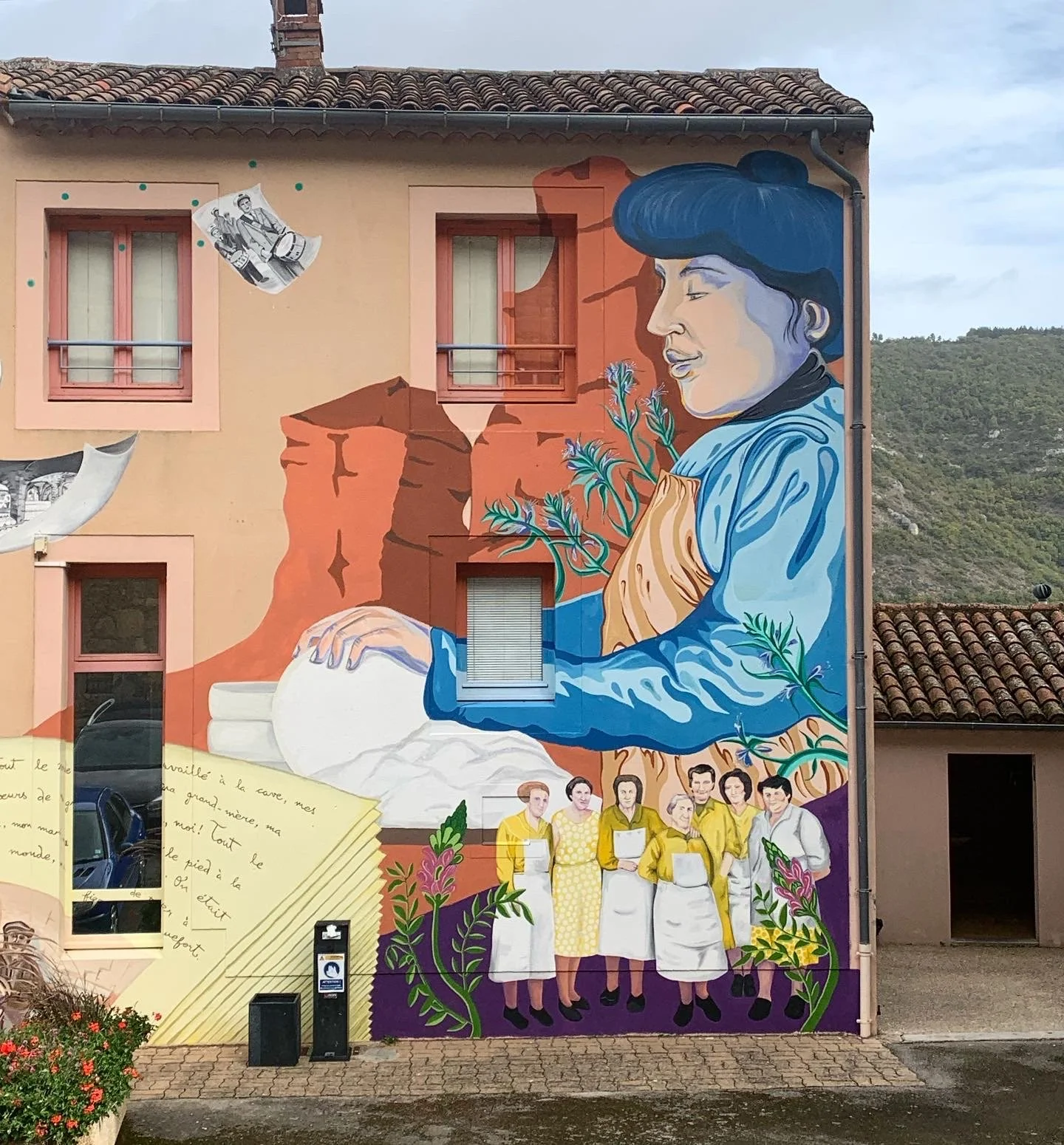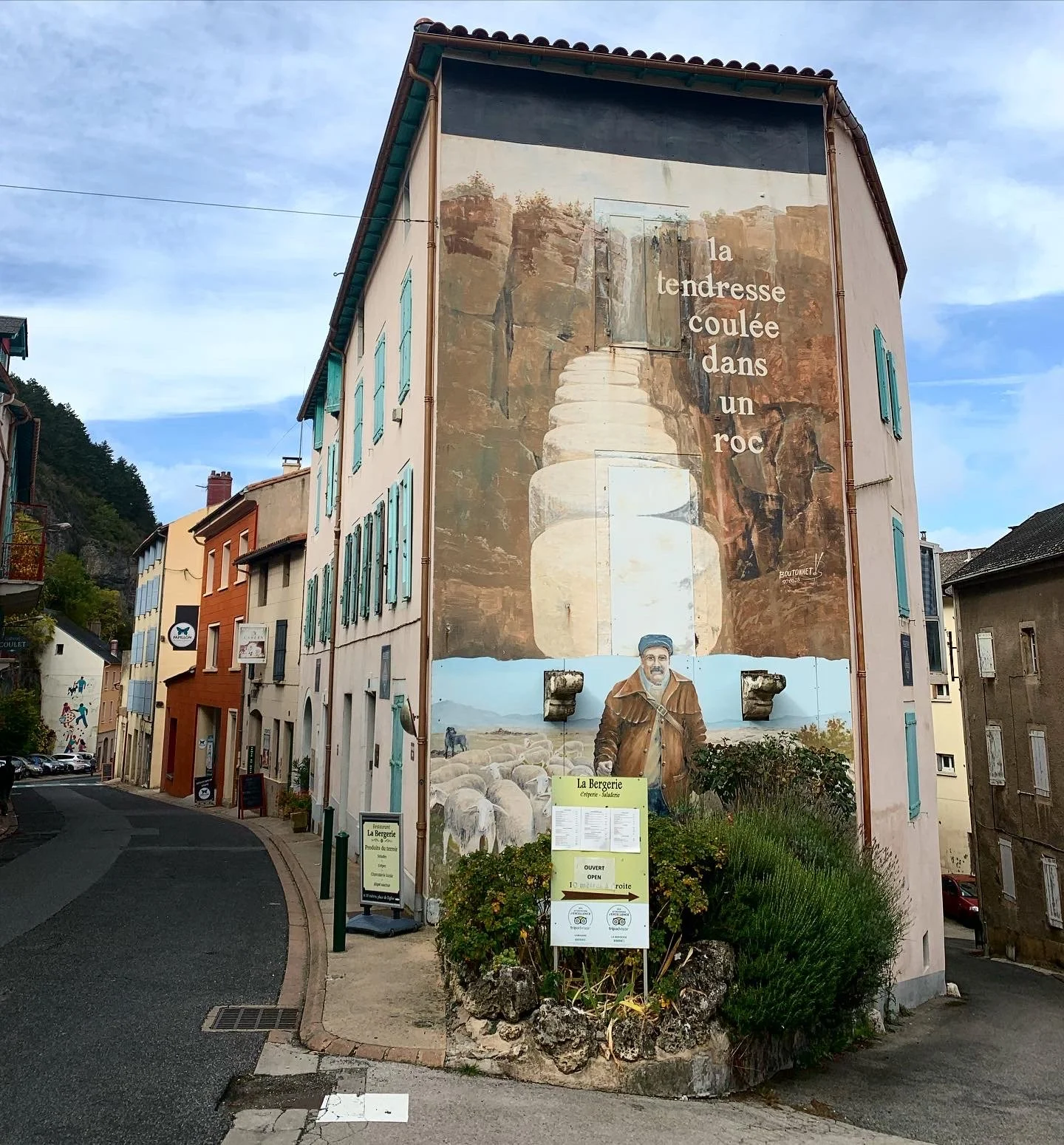Roquefort: King of Cheese
The village of Roquefort. The only place in the world where Roquefort cheese can be produced.
This tiny area beholds the geographical and particular agricultural practices that the European Union has elected to protect at the turn of the last century. This history of cultural protection of this cheese dates back to the 1400’s! You cannot make blue cheese and brand it Roquefort unless it fulfils very distinct criteria from within the Roquefort region and its caves boasting the perfect conditions of humidity and temperature. Just like the name Champagne. Sparkling wine cannot be called Champagne unless it actually comes from the Champagne region in France and uses specific grapes and traditional techniques to make the wine.
The tasting room above the Papillon Roquefort caves and production site.
Specific fungus is grown in bread in the caves for about 40 days before it is extracted and then carefully sifted and tested before being injected into the curd, just before the cheese is poured into molds.
From top left: My favorite, Gabriel Coullet’s petite cave, Papillon’ premium in a silky leek soup, and Papillon’s black label in a crunchy biscuit.
Sablés Roquefort au Quatre-Épices
(Dozen 4-spice Roquefort biscuits- recipe adapted from Papillon Roquefort cookbook)
In a bowl, mix together all the ingredients with your hands: 1/2 c of Roquefort, 1 c of flour, 1/3 c softened butter, 1/2 tsp 4-spice (or combo of nutmeg, cinnamon & clove)
Roll into a log approximately 2 inches thick and refrigerate for an hour.
Preheat the oven to 320 degrees.
Slice log into half inch slices, and flatten onto parchment paper.
Bake for 15 minutes or until golden. (I successfully halved this recipe as well.)
Soupe Poireaux
Finely chop a medium-sized yellow onion and start softening it in a TBSP of butter (use olive oil if you prefer).
Finally chop and add 2 leeks, simmering until soft.
Add 2 cups of vegetable or chicken broth (or water with a tsp of salt), and bring to a low rolling boil. At this stage I add in a peeled and chopped yukon potato.
Once potato is soft, take off the heat, and while using an immersion blender, add a cup of milk. If you like it a little richer, add in a few tablespoons of sour cream or plain yogurt as well.
Garnish with crumbled Roquefort and finely chopped green onions. Serve with your biscuits!
Wine
If enjoying just a little Roquefort with crackers or thinly sliced baguette for an aperitif or desert, I highly recommend serving it with a muscat, or fortified wine or port. The sweetness goes oh so well with the salty/creaminess.
In 1411 King Charles VI gave rights to the ageing of Roquefort to only one village: Roquefort-sur-Soulzon. As of 2003, there are seven Roquefort producers. The largest is "Roquefort Société". "Roquefort Papillon" is also a well-known brand. The five other producers are "Carles", "Fromageries occitannes", "Gabriel Coullet", "Vernières" and "Le Vieux Berger".
I have always enjoyed the sharp and salty taste of blue cheeses either crumbled on a salad or married within a soft runny rind cheese smeared on a crunchy baguette. But there is nothing like the outer body experience that happens when you let creamy Roquefort melt on your tongue while looking out over the hills where the sheep graze the tender grasses in spring. Only that spring milk is used to start the annual cycle of production. This explosion of complex flavor is the memory of spring you taste in your mouth when the cheese is finally ready to eat in autumn after 90 days of ripening. You taste the land and sunshine and the labour of love that has been passed down for generations. This is something deeply cultural and artisanal, worthy of protecting and visiting if you ever get the special opportunity.
The Appellation d'origine contrôlée (AOC) regulations that govern the production of Roquefort have been laid down over a number of decrees by the INAO (Institute of Origins and Quality). These include:
All milk used must be delivered at least 20 days after lambing has taken place.
The sheep must be on pasture, whenever possible, in an area that includes most of Aveyron and parts of neighboring areas. At least 75% of any grain or fodder fed must come from the area.
The milk must be whole, raw (not heated above 34 °C [93 °F]), and unfiltered except to remove macroscopic particles.
The addition of rennet must occur within 48 hours of milking.
The Penicillium roqueforti used in the production must be produced in France from the natural caves of Roquefort-sur-Soulzon.
The salting process must be performed using dry salt.
The whole process of maturation, cutting, packaging and refrigeration of the cheese must take place in the commune of Roquefort-sur-Soulzon. Source: INAO

